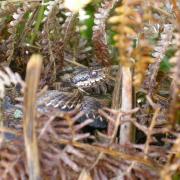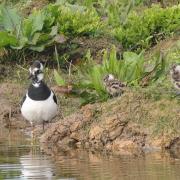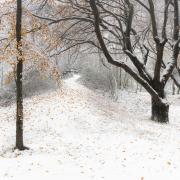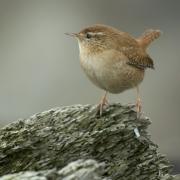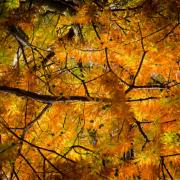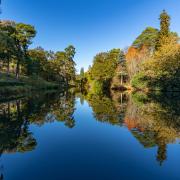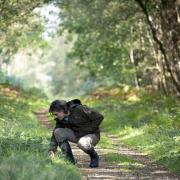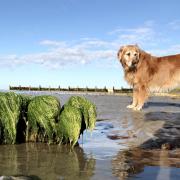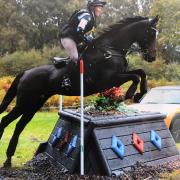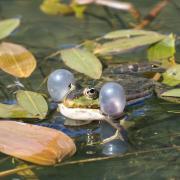Kingley Vale – a priceless natural resource for all. At the 360-acre downland nature reserve north-west of Chichester, manager Katherine Birch is balancing the demands of man and nature.
Kingley Vale, the 360-acre downland nature reserve just north-west of Chichester, is one of the most remarkable meeting points in Britain, where two busy calendars jostle with colour and drama.
One timetable is human, the other, much more spectacular, is the world of nature, a glorious seasonal cavalcade of creatures, plants and trees – especially trees, for that perpetual dark-green stain on its southern slopes is the finest yew forest in Europe.
But of all the trees in the wood the most important, currently, is Birch, Katherine Birch, Natural England’s dynamic young manager, fresh back from holiday and busily prioritising what is surely one of the most interesting and challenging in-trays imaginable…
Stepping out of her wheezy bullock of a 4x4, Katherine takes a deep breath and lists some of the tasks, immediate and long-term. Each season brings special demands, with summer the high season for human visitors, and winter the busiest time for site maintenance.
Suddenly, though, topping the agenda are double blows – a major break-in at the site office, with essential machinery and tools stolen, which leaves Katherine infuriated that basic site maintenance, and even emergency access for ambulance and fire crews, may now be impaired; and there was a large, highly damaging fire in “The Cathedral”, the magnificent heart of the forest. All told a frustrating and heart-breaking period for management, but other regular tasks continue to press in.
Katherine says, “We must see that no trees have fallen on paths, for visitor safety and access is paramount.
“Some 100,000 people a year flock here, including fine view connoisseurs, nature-lovers and school parties doing field projects,” like monitoring grassland areas for flecks of pink, white and purple (yes, orchids), recording the all-too-brief fluttering of up to 39 of Britain’s 58 butterfly species, and looking closely at the poet Tennyson’s “fantastic forest” – the yews, with their ancient, graceful contortions, part of an evolving and shifting natural phenomenon.
“We also have to check for vandalism especially in areas such as the tumuli on the Vale’s crest.
“These burial mounds are Bronze Age (around 3,500 years old) and among the most important scheduled sites in southern England,” and therefore worthy of more than illicit barbecue use.
“Then there’s the tree-felling programme, timed to be after the bird-nesting season,” with thriving species in the woods-and-chalkland terrain including woodpeckers, skylarks, four types of owl, pipits, warblers and goldcrests, with migratory flocks of redwings dropping by in dark winter days for some of those delicious yew berries. The red pulpy arils – known by local kids as snottygobs – are edible but the seed in the middle is poisonous
As the keeper of the calendars Katherine has to direct the “home team “ – conservationists comprising three sets of volunteers who do all kinds of jobs, from scrub-bashing to fence installation, dewpond restoration, footpath and signage maintenance – and deal with visitors who, she says, “all need to know that they are on a unique SSSI site which requires all the help it can get to survive in the beautiful way that we love.”
Later, Katherine receives a vital message about the fencing defining the reserve from its encircling but highly sympathetic farming neighbours who don’t want their organic cattle dining on those poisonous yews.
Could Katherine and her practical all-weather squad adjust the barbed wire-topped fences so that young deer do not become trapped or hurt as they leap in for a bark lunch?
Later that week a school party is due – 20 seven-year-olds eager for info on the yews, the site’s archaeology, and all facing a healthily demanding 30-minute climb to the summit to see the tumuli, the superb almost 360-degree panorama embracing the Isle of Wight, the coastal plain, the dip and curve of the Downs north, west and east (as far, on a truly exceptional day, as the white cliffs of Dover, only they’ll look yellow).
The views south were among the favourite of Sir Arthur Tansley, honoured by a commemorative stone, for here, in Sussex splendour, came the inspiration for the whole notion of nature reserves as national treasure-houses.
On May 19, 1911, Kingley Vale was among the first Nature Conservancy sites created, and, under constantly evolving government regimes, its future is assured – as long as a supremo like Katherine, backed up by professional contractors for heavy-duty tree surgery, for example, and a steady posse of enthusiastic voluntary conservationists, is on hand to respond promptly and skilfully to the Vale’s beauty and general health needs.
Much of that well-being is due to her predecessor Richard Williamson, son of Henry the Tarka the Otter author. Richard’s 45-year stewardship surpasses in detail (almost every Vale creature’s population variation faithfully recorded) and spans even such nature chronicle epics as Gilbert White’s Selborne.
Turning off the insistent electronic demands for the moment, Katherine eases into a grateful smile and says, “As you see we do get our setbacks, but overall this job is the best in the world, with all the things I could hope for while working in a uniquely beautiful place and trying to keep a happy balance between people and nature. Every day is different.”
Kingley Vale is always open, a never failing source of delight. For more details email or phone 01243 575353.



